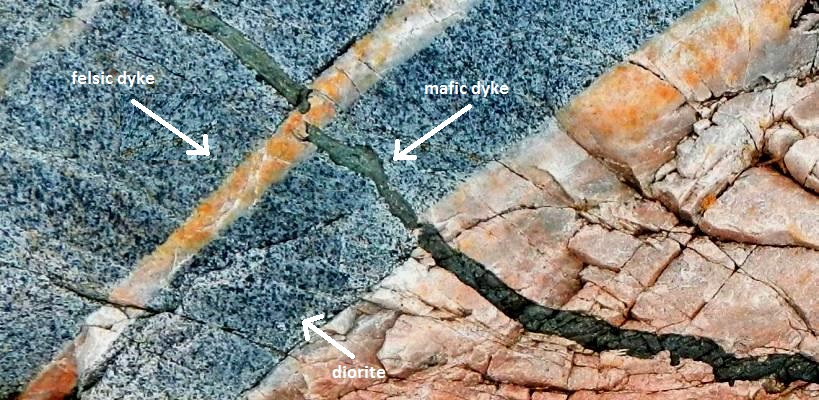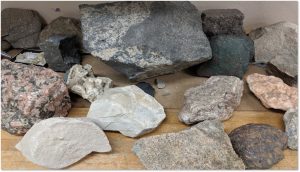Chapter 6 Igneous Rocks
Learning Objectives
After carefully reading this chapter, completing the exercises within it, and answering the questions at the end, you should be able to:
- Explain the difference between magma, lava, intrusive, and extrusive igneous rocks
- Explain the concept of partial melting and describe the geological processes that lead to melting.
- Describe, in general terms, the range of chemical compositions of magmas.
- Discuss the processes that take place during the cooling and crystallization of magma, and the typical order of crystallization according to the Bowen reaction series.
- Explain how magma composition can be changed by fractional crystallization and partial melting of the surrounding rocks.
- Apply the criteria for igneous rock classification based on mineral proportions.
- Describe the origins of phaneritic, porphyritic, and pegmatitic rock textures.
- Identify plutons on the basis of their morphology and their relationships to the surrounding rocks.
- Explain the origin of a chilled margin.

Minerals are composed of atoms, and a rock is composed of a consolidated mixture of minerals. By consolidated, we mean hard and strong; real rocks don’t fall apart in your hands! A mixture of minerals implies the presence of more than one mineral grain, but not necessarily more than one type of mineral (Figure 6.0.1). A rock can be composed of only one type of mineral (e.g., limestone is commonly made up of only calcite), but most rocks are composed of several different minerals. A rock can also include non-minerals, such as fossils or the organic matter within a coal bed or in some types of mudstone.
If you take some time to look at rocks, you will notice that rocks come in a wide variety of colors, textures, shapes, smells, densities, etc (Figure 6.0.2). And you will notice there seems to be an unending list of specific rock names (e.g., basalt, monzogranite, conglomerate, sandstone, amphibolite).

As scientists, we like to organize nature into categories. It makes understanding a large amount of complex information easier to understand. So, how would you organize the thousands of different rock types on earth into different groups? Color? Texture? Taste? Smell? Location where they were found on Earth? Type of minerals the rock contains? It turns out the plethora of different rocks types can and organized into three main categories based simply on how they form:
- Igneous: formed from the cooling and crystallization of magma (molten rock)
- Sedimentary: formed when weathered fragments of other rocks are buried, compressed, and cemented together, or when minerals precipitate directly from solution
- Metamorphic: formed by alteration (due to heat, pressure, and/or chemical action) of a pre-existing igneous or sedimentary rock
Media Attributions
- Figure 6.0.1: © Steven Earle. Adapted by Josie Gray (labelled). CC BY.
- Figure 6.0.2: © Ryan Anderson. CC BY.
a rock formed from the cooling of magma
rock that has formed by the lithification of sediments
the transformation of a parent rock into a new rock as a result of heat and pressure that leads to the formation of new minerals, or recrystallization of existing minerals, without melting
